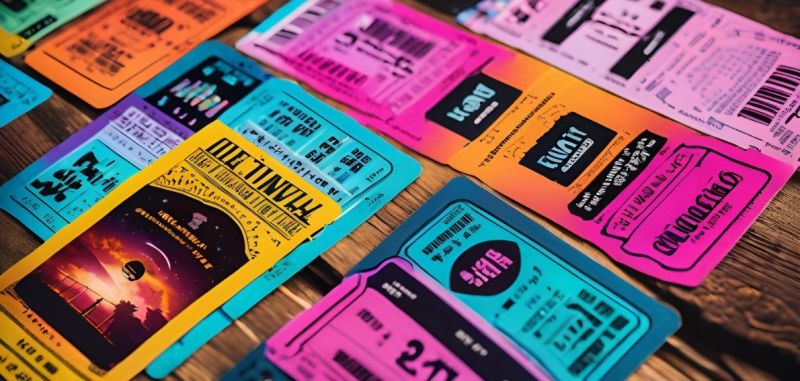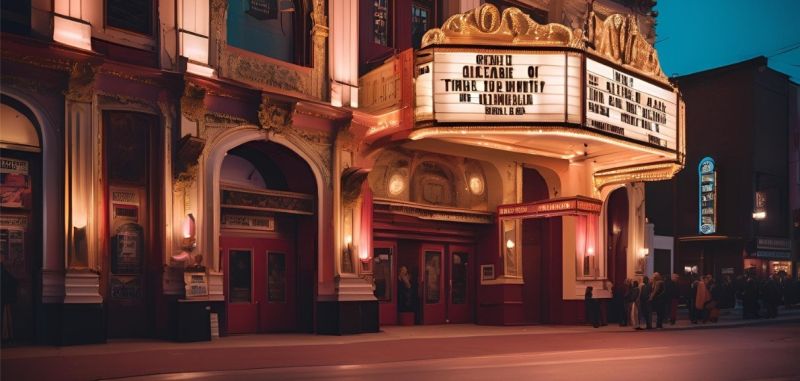In recent years, the entertainment industry has seen a significant shift in how ticket prices are set, and one of the most notable changes has been the adoption of dynamic pricing and dynamic ticket pricing. Originally popularized by industries like airlines and hotels, dynamic pricing has now made its way into the world of theatre, transforming the way ticket prices fluctuate and the overall economics of attending a live performance. As theatres look to remain competitive and meet audience demands, dynamic pricing is becoming an increasingly important factor in the industry.
What is Dynamic Pricing?

Dynamic pricing is a strategy where ticket prices for events, such as theatre performances, fluctuate based on various factors such as demand, timing, seat location, and audience behavior. Essentially, ticket prices are no longer fixed at a set rate. Instead, they change in real-time, similar to how airlines adjust ticket prices based on demand or how ride-sharing apps adjust fares based on real-time conditions. Dynamic pricing solutions involve the use of sophisticated algorithms and data analytics to adjust prices in real-time.
This pricing model allows theatre companies to capitalize on high demand, maximize revenue, and fill seats during lower-demand times. Dynamic pricing can apply to different types of performances, including Broadway shows, regional theatre productions, and live performances of all kinds.
Definition and Explanation
Dynamic pricing is a pricing strategy that involves adjusting the price of a product or service in real-time based on market demand. This approach allows businesses to optimize their pricing strategy and maximize revenue by charging higher prices when demand is high and lower prices when demand is low. Dynamic pricing is commonly used in various industries, including ticketing, hospitality, and e-commerce.
The Factors Driving the Rise of Dynamic Pricing Strategy in Theatre

Several key factors have contributed to the rise of dynamic pricing in the theatre industry:
- Advances in Technology: The use of sophisticated algorithms and data analytics has made dynamic pricing more accessible and efficient for theatres. Software programs track audience demand, monitor ticket sales, and adjust prices in real-time based on patterns observed in the market. This technology has made it easier for theatres to implement dynamic pricing systems without significant overhead costs.
- Changing Consumer Behavior: With the growth of online shopping and on-demand entertainment, consumers are becoming accustomed to dynamic pricing in other areas of their lives. From ride-sharing services like Uber to hotel bookings and even sports events, many industries have already embraced dynamic pricing models. As consumers become more comfortable with this flexible pricing structure, theatres are recognizing the need to adopt similar strategies to stay competitive.
- Increased Competition: As more entertainment options become available, theatres must work harder to attract audiences. With digital platforms and streaming services offering an abundance of content at lower prices, live theatre needs to find ways to make attending a show more appealing. Dynamic pricing allows theatres to offer more flexible pricing options that can accommodate different budgets and encourage people to purchase tickets for specific shows.
- Revenue Maximization: The rise of dynamic pricing is also driven by the desire to maximize revenue. Traditional pricing methods, which rely on fixed prices for all seats, often leave some seats unsold, while others are sold at a premium. With dynamic pricing, theatres can increase ticket prices during peak demand periods (such as weekend evenings or holiday performances) and lower them during off-peak times, ensuring that more tickets are sold at the right price point. Additionally, segmented pricing allows theatres to offer different price points for different customer segments, such as students and seniors, further enhancing revenue potential.
How Dynamic Pricing Works in Theatre

The implementation of dynamic pricing in theatre is a nuanced process that considers several key variables:
- Demand-Based Pricing: One of the main drivers of dynamic pricing is demand. Tickets for a popular show or a performance during a prime time (like a Saturday night) will likely cost more due to high demand. Conversely, tickets for less popular times (such as weekday matinees) may be offered at a discount to attract more attendees. Theatres price tickets based on demand to maximize revenue, similar to Ticketmaster’s approach of adjusting ticket prices in real time for high-profile events.
- Seat Location: Much like in sports stadiums or concert venues, dynamic pricing often varies by seat location. Premium seats closer to the stage or with better sightlines are usually priced higher than seats further away. With dynamic pricing, these price differences can fluctuate depending on demand, time, and availability.
- Time and Timing: The date and time of a performance are critical factors in determining ticket prices. Tickets for the first week of a highly anticipated Broadway show or a special performance are likely to be priced higher, while tickets for later dates or slower days may be discounted to encourage sales. Ticket price can vary significantly depending on the timing of the performance.
- Market Segmentation: Some theatres employ dynamic pricing with specific customer segments in mind, such as offering discounts to students, seniors, or loyalty program members, while increasing prices for last-minute buyers or tourists looking for tickets during peak seasons.
Dynamic Pricing Model
A dynamic pricing model is a mathematical algorithm that uses data and analytics to determine the optimal price for a product or service based on market conditions. The model takes into account various factors such as demand, supply, competitor pricing, and market trends to adjust prices in real-time. The goal of a dynamic pricing model is to maximize revenue and profitability while also ensuring that prices are fair and competitive.
Real-World Examples
Dynamic pricing is widely used in various industries, including ticketing, hospitality, and e-commerce. For example, Ticketmaster uses dynamic pricing to adjust ticket prices for concerts and sporting events based on demand. Similarly, hotels and airlines use dynamic pricing to adjust room rates and flight prices based on occupancy and demand. Online retailers such as Amazon also use dynamic pricing to adjust prices of products based on demand and competitor pricing.
Benefits of Dynamic Pricing for Theatre Producers, Audiences, and Ticket Prices

For Theatre Producers:
- Maximized Revenue: Dynamic pricing helps theatres optimize revenue by charging higher prices during peak demand times and filling seats during lower-demand periods. This enables theatres to generate more revenue without increasing the overall price for every ticket. Additionally, dynamic pricing allows theatres to charge premium prices for high-demand performances, balancing affordability and profitability.
- Increased Ticket Sales: By adjusting prices based on demand and audience behavior, theatres can ensure that more tickets are sold, even during off-peak times, improving occupancy rates and reducing the likelihood of empty seats.
- Better Audience Targeting: Dynamic pricing can be tailored to specific customer segments, allowing producers to target different audiences with the right price for their budgets. This helps theatres reach a wider and more diverse audience, from loyal fans to occasional theatre-goers.
For Theatre Audiences:
- Affordable Options: For many theatre-goers, dynamic pricing provides more flexibility. Those who purchase tickets early or opt for less popular dates and times can often secure lower prices. This allows budget-conscious attendees to enjoy high-quality performances without breaking the bank. Dynamic pricing can offer cheaper prices for those who book early or choose less popular dates.
- Transparency: Some dynamic pricing models offer transparency, allowing buyers to see price changes in real-time and helping them make informed purchasing decisions. This transparency can encourage more consumers to plan ahead and book tickets early, knowing they’re getting a fair price for their seat.
- Exclusive Access: For fans willing to pay more, dynamic pricing allows them to secure the best seats for their desired performance dates, adding an element of exclusivity and VIP access to top-tier performances.
Financial Sustainability
Dynamic pricing can help businesses achieve financial sustainability by optimizing their pricing strategy and maximizing revenue. By charging higher prices when demand is high and lower prices when demand is low, businesses can increase their revenue and profitability. Additionally, dynamic pricing can help businesses to better manage their inventory and reduce waste by adjusting prices based on demand.
Challenges to Implement Dynamic Pricing in Theatre
While dynamic pri

cing offers many advantages, it also comes with its set of challenges:
- Price Sensitivity: Some theatre-goers may find dynamic pricing frustrating if they feel they are being charged unfairly for tickets, especially when prices fluctuate rapidly. Prices rise during high-demand periods, which can lead to consumer dissatisfaction if not managed transparently. This could lead to dissatisfaction, particularly if patrons feel that the pricing system is opaque or inconsistent.
- Ticket Resellers: Dynamic pricing can sometimes fuel the secondary ticket market, where resellers purchase tickets at a lower price and sell them at a profit. This can lead to inflated prices for consumers who wait until the last minute to buy tickets, limiting their ability to access affordable seats.
- Market Perception: Theatre companies must carefully manage the perception of fairness. If ticket prices are seen as too variable or if customers feel they are being charged exorbitantly for premium performances, it could harm the theatre’s brand reputation and alienate loyal patrons.
Implementing Dynamic Pricing

Implementing dynamic pricing requires a combination of data analytics, market research, and pricing strategy. Here are the steps to implement dynamic pricing:
Steps to Implement Dynamic Pricing
- Define your pricing goals: Determine what you want to achieve with dynamic pricing, such as increasing revenue or improving profitability.
- Collect data: Collect data on market demand, competitor pricing, and customer behavior to inform your pricing strategy.
- Choose a pricing model: Select a dynamic pricing model that suits your business needs, such as a demand-based pricing model or a competitor-based pricing model.
- Set price ranges: Set price ranges for your products or services based on market demand and competitor pricing.
- Monitor and adjust: Continuously monitor market conditions and adjust prices in real-time based on demand and competitor pricing.
- Communicate with customers: Communicate with customers about your pricing strategy and ensure that prices are transparent and fair.
- Evaluate and refine: Continuously evaluate and refine your dynamic pricing strategy to ensure that it is achieving your pricing goals.
The Future of Dynamic Pricing in Theatre

As more theatres adopt dynamic pricing, it’s clear that this pricing model will play a key role in shaping the future of live performances. Advances in data analytics, consumer behavior analysis, and technology will continue to improve the accuracy and efficiency of dynamic pricing algorithms, allowing theatres to fine-tune their ticket pricing strategies and maximize their revenue potential.
At the same time, it will be essential for theatre companies to find the right balance between revenue maximization and audience satisfaction. The success of dynamic pricing will depend not just on how much money it can generate, but on how well it can be integrated into a broader strategy that fosters long-term relationships with theatre-goers and enhances the overall experience.
A New Era for Theatre Ticketing

The rise of dynamic pricing represents a new era in how theatre tickets are priced and sold. As technology continues to evolve and consumer expectations shift, theatres will need to adapt to these changes in order to remain relevant and competitive. Dynamic pricing solutions are essential for theatres to remain competitive and meet evolving consumer expectations. Dynamic pricing allows theatre companies to better match ticket prices with demand, ensuring that more people have access to live performances at a price that suits their budget.
For audiences, dynamic pricing offers flexibility and the opportunity to find affordable tickets while providing access to exclusive experiences. The challenge lies in making this pricing model transparent and fair, ensuring that both producers and audiences benefit from the evolving landscape of theatre ticketing. The future of theatre may just be more dynamic than ever before.
You May Also Like:
The Impact of Dynamic Pricing on Nightclub Tickets: What You Need to Know



 18th April 2025
18th April 2025